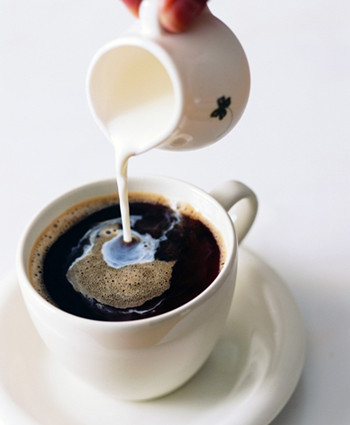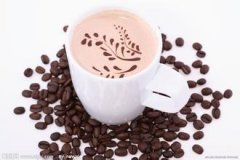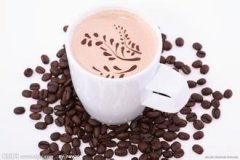Japan-The Most Expensive Coffee
Japan-the most expensive coffee

Coffee first entered Japan, brought by Dutch missionaries and merchants around 1630, when the Dutch desperately promoted coffee to their Asian colonies of Sri Lanka and Java, India. But the Japanese don't accept this weird drink at all. Until the Meiji Restoration era, Japanese society set off the wind of "Western learning", people gradually accepted the advanced western industrial civilization, at the same time accepted one of their way of life: coffee. The earliest cafes appeared in the "clubhouse", that is, hotels dedicated to receiving foreign envoys, most of which were located in port cities such as Kobe and Yokohama. Since then, coffee has gradually entered the life of upper-class society in Japan and become a "high-end drink". In 1883, in order to cater to the needs of Western dignitaries, Japan specially built a luxury hotel "Lu Ming Hall". Everything at the banquet was carried out in accordance with the "French full meal" model, from the start of pre-meal wine to the last coffee, are officially included in the menu.
Like Europe, the earliest cafes at the end of the 19th century always gathered a large number of literati, where they spent only 1/3 of the price of an upscale restaurant on a cup of coffee. At the same time, attacks on coffee are inevitable in a country famous for the tea ceremony. For example, there was a popular folk song called "Black and White Festival" at that time, in which a paragraph read: "it's funny to stick out the western nose quietly, not to drink sake, but to have beer and brandy and drink coffee with the solemn expression of the tea ceremony." But compared with the solemn tea ceremony, the casual social venue cafe is clearly a favorite of young people and radicals. Coffee quickly became a hot popular drink.
The top and most expensive coffee in the world is in Japan, and the most popular coffee is also in Japan. Apart from instant coffee, Japan is the first country to introduce canned (liquid) coffee. In addition, Japan is the only country with an official coffee festival, which is celebrated every year on October 1.
Japanese coffee culture
Today, Japan has become the world's third largest importer of coffee, after the United States and Germany, importing 400000 tons of unroasted coffee beans in 2000 alone. Young people in Japan regard going to cafes as part of urban life, and the lifestyle of little bourgeois is also very popular in Japan. Since the 1990s, cafes have gradually formed a unique scenery on the streets of big cities in Japan. However, most cafes in Japan do not transplant the characteristics of European and American cafes as they are. Although Japan seems to be the most loyal proponent of the trend of internationalization, Japanese cafes are more likely to show the collision of Eastern and Western cultures. During the period of Japan's bubble economy, countless Western things poured into Japan, and tourists from all over the world traveled to Japan every year to learn about the country and bring new cultural elements to the country.
Japan seems to be a big sponge, which has a strong ability to absorb and digest multiculturalism. The Japanese have the ability to localize foreign cultures. Japanese cafes are a good example. Cafes are the places with the most mixed cultural characteristics in Japan. Japanese cafes are usually designed with unique design, easy interior decoration, and a combination of functional and multicultural features, in addition to providing drinks and simple food. Cafes are usually designed as places for learning, reading, talking and making friends. Moreover, the drink list of each cafe will be updated in a timely manner, and even regular customers can make new discoveries at any time.
As a compromise of cultural integration to the traditional way of life, green tea is still sold in many cafes in Japan. Japan is a big consumer of green tea, consuming about 100000 tons a year. Even young people who love Western culture love green tea at the same time. Therefore, it is very common and reasonable to provide green tea in cafes.
The Japanese use charcoal fire to bake coffee, which mainly uses the radiation of charcoal fire to heat the coffee evenly from the inside to the outside, thus effectively avoiding the destruction of coffee tissue structure. In the words of the Japanese themselves, this method has the original infrared effect.
Although Japan does not produce coffee, the coffee industry has its own unique features. They bring in tools invented in Thailand but not widely available, re-analyze them, improve them and sell them. Dutch (an instrument for extracting coffee with cold water) invented by the Dutch is also favored by the Japanese. Appliances that are rare in the Netherlands are not difficult to buy in Japan. Japan has also imitated the world-famous "Melita filter" to make a comparable "Karita filter". In addition, Japanese coffee grinders, seals, improved "Siphon" (the name of siphon pipette) and even household roasters are all "Japanized" in a unique way.
Important Notice :
前街咖啡 FrontStreet Coffee has moved to new addredd:
FrontStreet Coffee Address: 315,Donghua East Road,GuangZhou
Tel:020 38364473
- Prev

Coffee brewing utensils and using utensils and methods for brewing coffee
First, filter paper brewing-the easiest brewing method [characteristics] the simplest coffee brewing method. Filter paper can be discarded immediately after use, which is more sanitary and easy to clean up. The amount of boiling water and the injection method can also be adjusted. One person can also brew, which is the best way to brew a small number of people. [about apparatus] the drip can be divided into one hole and three holes. Three holes are used here. Inject boiled water
- Next

American coffee the United States is a young and vibrant country.
The United States is a young and dynamic country, any form of culture in this country, like itself, is unrestrained, unstereotyped and spontaneous, and the coffee culture of the United States is no exception. Americans drink coffee casually, without scruples, without European sentiment, without Arab fastidiousness, and drink freely, comfortably, selfishly and detached. America
Related
- Detailed explanation of Jadeite planting Land in Panamanian Jadeite Manor introduction to the grading system of Jadeite competitive bidding, Red bid, Green bid and Rose Summer
- Story of Coffee planting in Brenka region of Costa Rica Stonehenge Manor anaerobic heavy honey treatment of flavor mouth
- What's on the barrel of Blue Mountain Coffee beans?
- Can American coffee also pull flowers? How to use hot American style to pull out a good-looking pattern?
- Can you make a cold extract with coffee beans? What is the right proportion for cold-extracted coffee formula?
- Indonesian PWN Gold Mandrine Coffee Origin Features Flavor How to Chong? Mandolin coffee is American.
- A brief introduction to the flavor characteristics of Brazilian yellow bourbon coffee beans
- What is the effect of different water quality on the flavor of cold-extracted coffee? What kind of water is best for brewing coffee?
- Why do you think of Rose Summer whenever you mention Panamanian coffee?
- Introduction to the characteristics of authentic blue mountain coffee bean producing areas? What is the CIB Coffee Authority in Jamaica?

